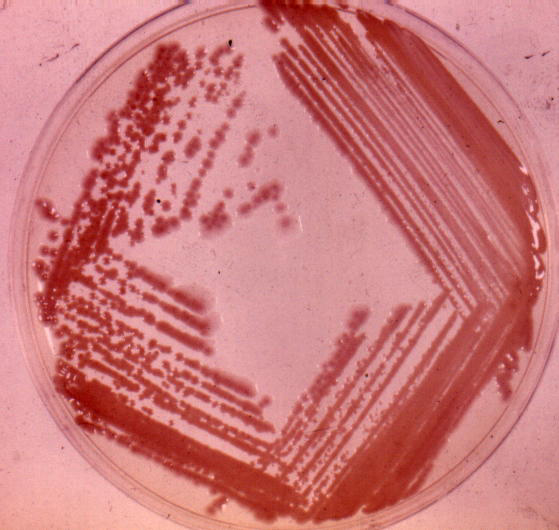


Bacteria in natural circumstances are almost always found as mixtures of many species. For most purposes, it is necessary to isolate the various organisms in pure culture before they can be identified and studied. The most important technique for this purpose is "streaking out" on the surface of a solid nutrient medium, the principle being that a single organism, physically separated from others on the surface of the medium, will multiply and give rise to a localized colony of descendants. It is extremely important that you master this technique:

Note: A culture taken with a cotton swab (e.g., throat swab) can be rolled and rubbed back and forth across the plate. Streaking from this area is then continued with a wire loop, as above. Alternatively, material from the swab can be suspended in 1 ml of sterile broth, which is then cultured as above. To sample a dry surface (skin, dish, table, etc.), moisten a swab with sterile broth, and then use it to rub the surface. Solid material (soil, food, etc.) should be suspended in a small amount of sterile broth or peptone water, which is then streaked out; or, a dilution series may be made for an accurate count, as in food and water testing.
| Lecture Syllabus | General Course Information | Grade Determination |
| Laboratory Syllabus | Interesting WebSite Links | Lab Safety |